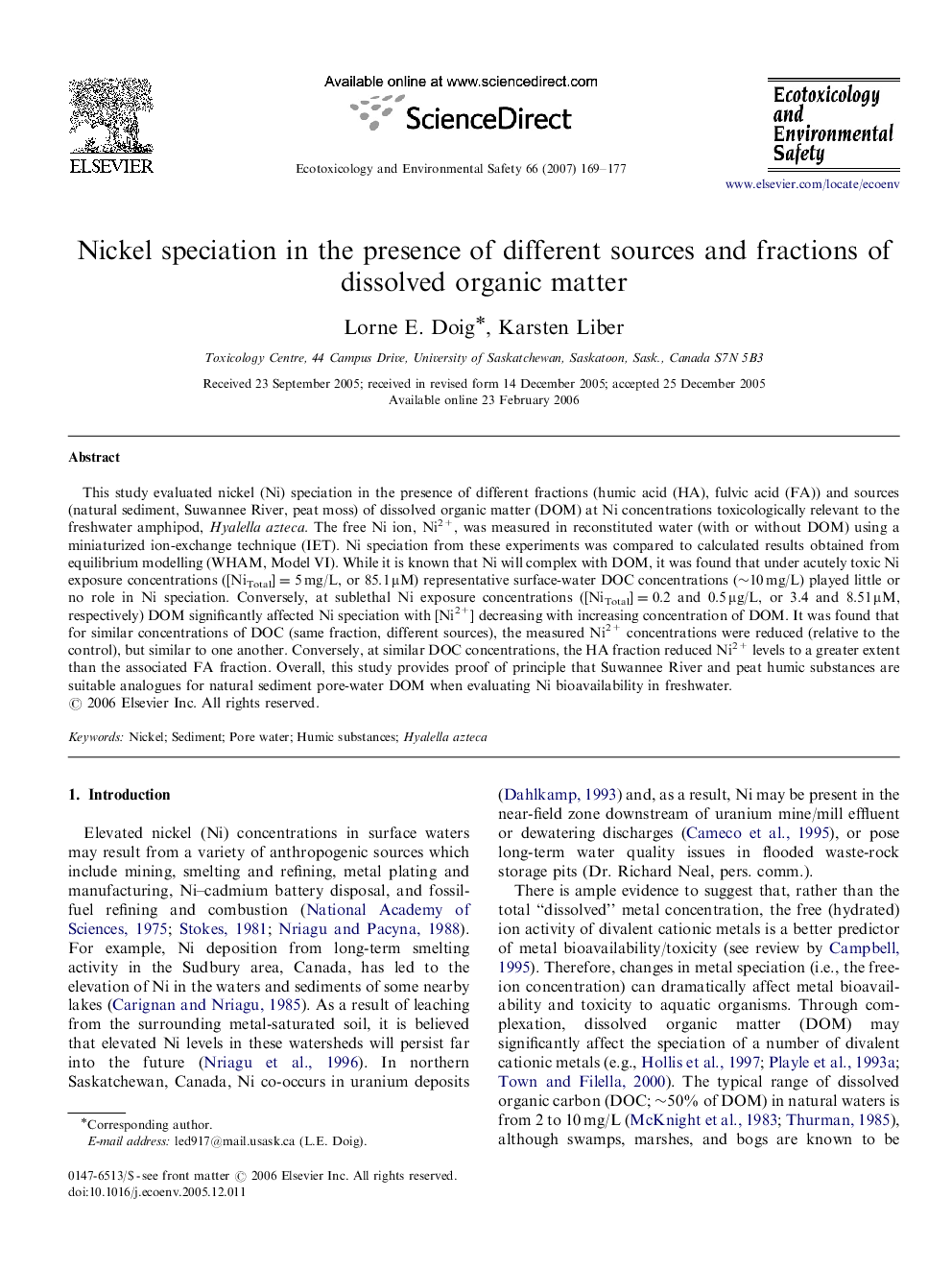| Article ID | Journal | Published Year | Pages | File Type |
|---|---|---|---|---|
| 4422409 | Ecotoxicology and Environmental Safety | 2007 | 9 Pages |
This study evaluated nickel (Ni) speciation in the presence of different fractions (humic acid (HA), fulvic acid (FA)) and sources (natural sediment, Suwannee River, peat moss) of dissolved organic matter (DOM) at Ni concentrations toxicologically relevant to the freshwater amphipod, Hyalella azteca. The free Ni ion, Ni2+, was measured in reconstituted water (with or without DOM) using a miniaturized ion-exchange technique (IET). Ni speciation from these experiments was compared to calculated results obtained from equilibrium modelling (WHAM, Model VI). While it is known that Ni will complex with DOM, it was found that under acutely toxic Ni exposure concentrations ([NiTotal]=5 mg/L, or 85.1 μM) representative surface-water DOC concentrations (∼10 mg/L) played little or no role in Ni speciation. Conversely, at sublethal Ni exposure concentrations ([NiTotal]=0.2 and 0.5 μg/L, or 3.4 and 8.51 μM, respectively) DOM significantly affected Ni speciation with [Ni2+] decreasing with increasing concentration of DOM. It was found that for similar concentrations of DOC (same fraction, different sources), the measured Ni2+ concentrations were reduced (relative to the control), but similar to one another. Conversely, at similar DOC concentrations, the HA fraction reduced Ni2+ levels to a greater extent than the associated FA fraction. Overall, this study provides proof of principle that Suwannee River and peat humic substances are suitable analogues for natural sediment pore-water DOM when evaluating Ni bioavailability in freshwater.
